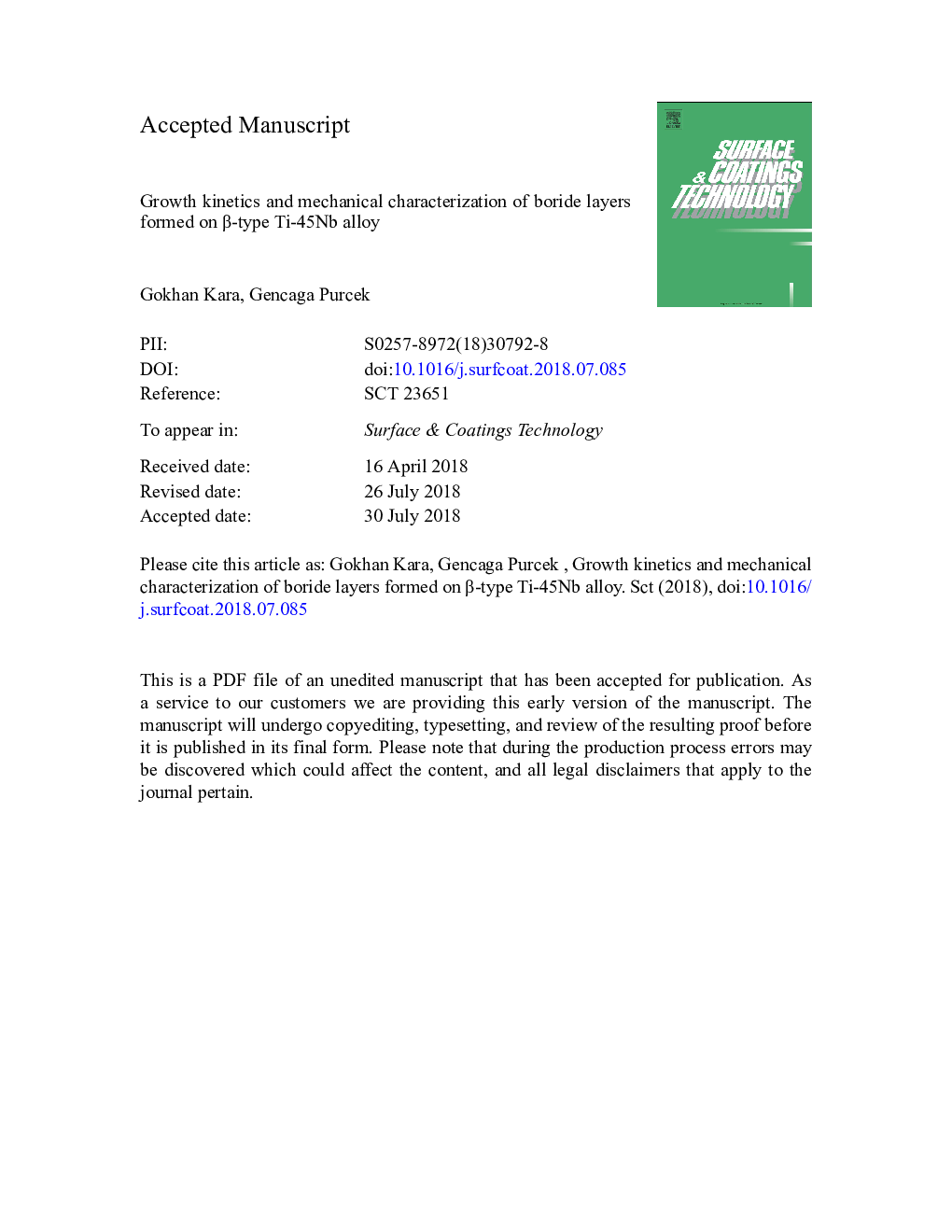| Article ID | Journal | Published Year | Pages | File Type |
|---|---|---|---|---|
| 8023198 | Surface and Coatings Technology | 2018 | 46 Pages |
Abstract
In this study, β-type Ti-45Nb alloy was borided by solid-state diffusion process in order to achieve a hard and adhered boride layer. Boriding was carried out in a solid medium consisting of amorphous boron, anhydrous borax and active carbon at temperatures between 850 and 1100â¯Â°C for time intervals of 3-24â¯h in order to determine boron diffusion kinetic and to achieve an optimum adhered layer thickness. Microstructure, mechanical properties, adhesion characteristic and growth kinetic of borided layers were investigated in detail by X-ray diffraction, GDOES and SEM-EDS analysis, microhardness and Rockwell-C adhesion tests. A layer consisting of monolithic TiB2·NbB2 phase with the hardness of about 34.3â¯GPa on the top and TiB whisker with the hardness of about 14.7â¯GPa beneath it was formed by boriding using optimum processing parameters. A diffusion model based on mass balance equations was used to estimate boron diffusion coefficients and activation energies in the boride layers. Activation energies in TiB2·NbB2 and TiB layers were determined to be 203.96â¯Â±â¯2.4â¯kJ/mol and 138.33â¯Â±â¯24.5â¯kJ/mol, respectively. Fracture toughness of the borided layer formed at 1000â¯Â°C for 24â¯h was found to be 2.84â¯Â±â¯0.8â¯MPaâ¯m1/2. Multiple concentric cracks occurred at the peripheral zone of indent by Rockwell-C adhesion test. But no or very limited delamination or spalling occurred due to the result of deeper penetration of TiB whiskers.
Keywords
Related Topics
Physical Sciences and Engineering
Materials Science
Nanotechnology
Authors
Gokhan Kara, Gencaga Purcek,
